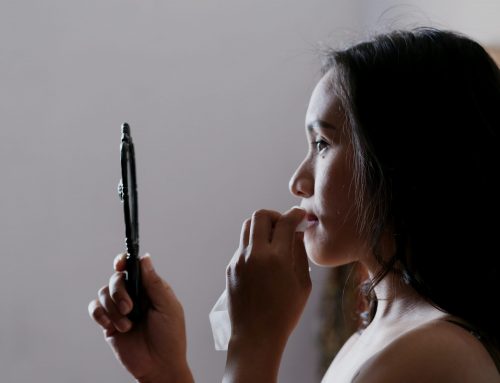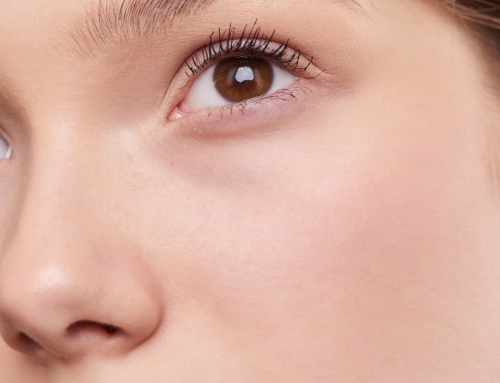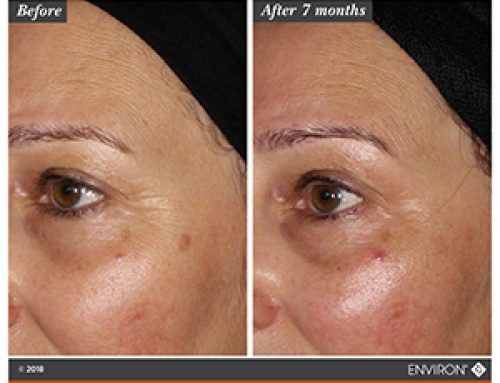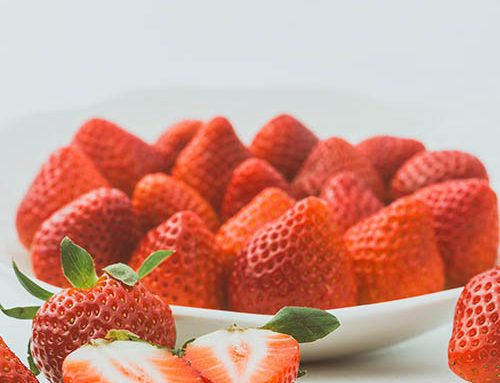Dry sensitive skin?
When your skin is dry it doesn’t have enough fats called lipids and the hydration and moisture that keeps your skin comfortable and supple can just evaporate causing more dry sensitive skin. A fancy name for this is; TEWL, or trans-epidermal water loss. So this aggravates dry skin causing a vicious circle, and a dryer even more sensitive skin! Called the lipid matrix this protective barrier is made of three lipids: cholesterol, free fatty acids and ceramides. These, lipids take on a highly ordered, 3-dimensional structure of stacked densely packed lipid layers. This forms the protective waterproof layer.
Winter Skin
If your complexion is short on lipids extremes of the seasons and environmental factors will drain the supply of these good fats because you don’t have the (fatty) defences you need to keep them in. The skin takes an extra blow in winter as there is a steep drop in ceramide levels. Add to that the weather, dry central heating, low-humidity, air pollution you can easily suffer with dry winter skin. If the skin is exposed in this way it can also become sensitive. Other factors include UV rays and sun damage that all deplete valuable lipids and in particular ceramides that naturally occur in the skin. That without considering other hormonal and genetic issues or diseases like diabetes that affect skin integrity, and of course poor skincare and over- exfoliation!
Ceramides
These waxy fats naturally occur in the skin and diminish with age and hormone changes, by the time you are in your 30s, you have lost about 40 percent of your skin’s ceramides, and by your 40s, you have lost 60 percent of your skin’s natural ceramides. So Ceramides are fats that help keep the top layer of skin cells cemented together, a bit like the mortar between bricks. It all starts in the deeper layers though, where they are formed, as they rise to the surface they die and dry out exuding their fatty contents which forms the cement between the cells that prevents moisture from leaking out. Additionally, thinning of the skin is a direct result of declining levels of ceramides affecting the elasticity and strength of the skin, which results in the heightened appearance of fine lines and ageing.
What can you do?
Topically applied ceramides can prevent dehydration more than traditional barrier forming moisturisers, as they do not form a layer that seals the skin surface to prevent surface water loss, which can also prevent proper exfoliation. Instead, they are quickly absorbed into the deeper living cells layers, where they are incorporated into the cells before they become the mortar that takes up the spaces between the cells! Ceremide supplements are also available I’d always get advice about a reliable source.
Your Diet
Incorporating healthy fats into your diet like omega 3 from oily fish, salmon sardines and mackerel at least 3 times a week. Supplements from algae sources are good for vegetarians as many vegetable sources have to be converted body meaning you have to eat loads more! Also olive rapeseed and coconut oil are good anti- inflammatory oils , look for virgin and cold pressed types so they are unrefined. Sources of ceramides include soya beans, eggs, dairy, wheat germ, and brown rice.
To sum up
As the skin is more than half fat it is easy to see low fat diets inflame this situation. This often causes sensitivity as there’s a lack of surface protection or mortar holding the bricks together! In addition to sealing in water for hydration it keeps the bad stuff out like microbes, infection and pollution holding the skin together ,well it is known as your birthday suit!
If you’re keen to get to the root cause of your skin struggles I can help you cut through the hype and support you with nutrition and or skincare treatments and that enables healthy beautiful skin that your proud of!
- Van Smeden J, Bouwstra JA. Stratum Corneum Lipids: Their Role for the Skin Barrier Function in Healthy Subjects and Atopic Dermatitis Patients. Current Problems in Dermatology (Switzerland) [Internet]. 2016 [cited 2020 Dec 11];49:8–26. Available from: https://pubmed.ncbi.nlm.nih.gov/26844894/
- Rogers J, et al., Stratum corneum lipids: The effect of ageing and the seasons. Archives of Dermatological Research [Internet]. 1996 [cited 2020 Dec 11];288(12):765–70. Available from: https://pubmed.ncbi.nlm.nih.gov/8950457/
- Elias PM, Wakefield JS, Man M-Q. Moisturizers versus Current and Next-Generation Barrier Repair Therapy for the Management of Atopic Dermatitis. Skin Pharmacology and Physiology [Internet]. 2019 Dec 1 [cited 2020 Dec 11];32(1):1–7. Available from: https://www.karger.com/Article/FullText/493641
- Anderson PC, Dinulos JG. Are the new moisturizers more effective? Current Opinion in Pediatrics [Internet]. 2009 Aug [cited 2020 Dec 11];21(4):486–90. Available from: http://journals.lww.com/00008480-200908000-00012
- Mizutani Y, Mitsutake S, Tsuji K, Kihara A, Igarashi Y. Ceramide biosynthesis in keratinocyte and its role in skin function. Vol. 91, Biochimie. Elsevier; 2009. p. 784–90.
- Gilchrest BA. A review of skin ageing and its medical therapy. Vol. 135, British Journal of Dermatology. Blackwell Publishing Ltd; 1996. p. 867–75.







